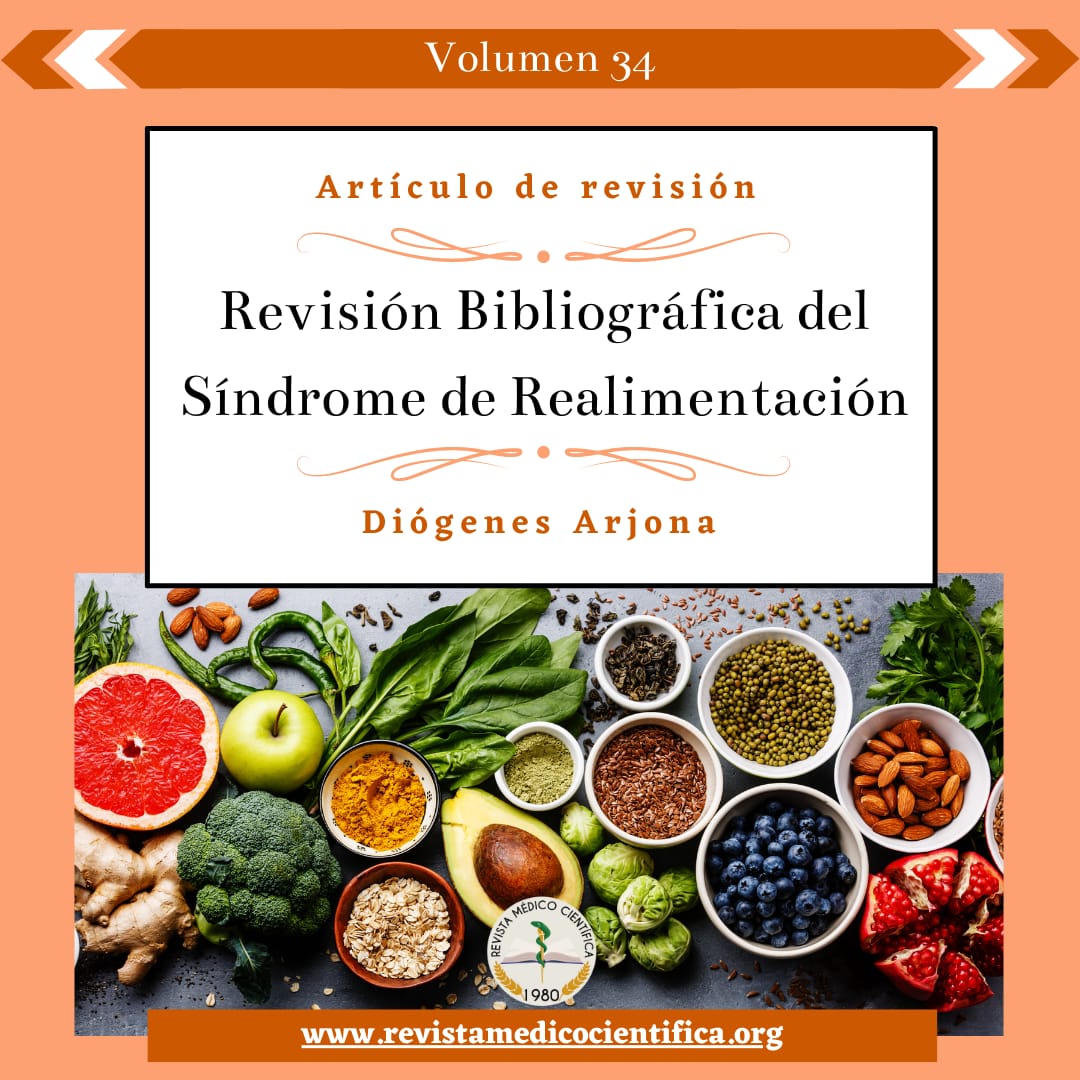BIBLIOGRAPHIC REVIEW OF REFEEDING SYNDROME
Main Article Content
Abstract
Refeeding syndrome is an underdiagnosed clinical entity due to its varied clinical manifestations which are mistakenly attributed to other clinical entities.
The refeeding syndrome describes a clinical syndrome in which electrolyte levels are altered, mainly phosphorus, after initiating or resuming enteral feeding. A consensus of experts (2018), Friedli et al. proposes the following criteria:
- Loss of phosphorus of ≥30%, ≤1.85mg / dL or less than 0.6 mmol / L of the phosphorus concentration or any of the other electrolytes.
- Potassium concentration that is ≤1.85 mg / dL (≤ 3.5 mEql / L)
- The presence of clinical symptoms such as edema, heart failure, respiratory failure, etc.
Its clinical manifestations will depend on the decrease in electrolytes like phosphorus, potassium, magnesium, and calcium, as well as micronutrients like thiamine. It is a disease with multisystemic clinical manifestations, mainly cardiovascular symptoms.
Once the syndrome is diagnosed, nutritional therapy should be withdrawn, and the electrolytes and micronutrients replaced.
Article Details

This work is licensed under a Creative Commons Attribution-NonCommercial-NoDerivatives 4.0 International License.
The authors grant the Editorial Comitte of Revista Medico Cientifica the right to publish this article in it. Also, they state that this manuscript has not been published prevously.

